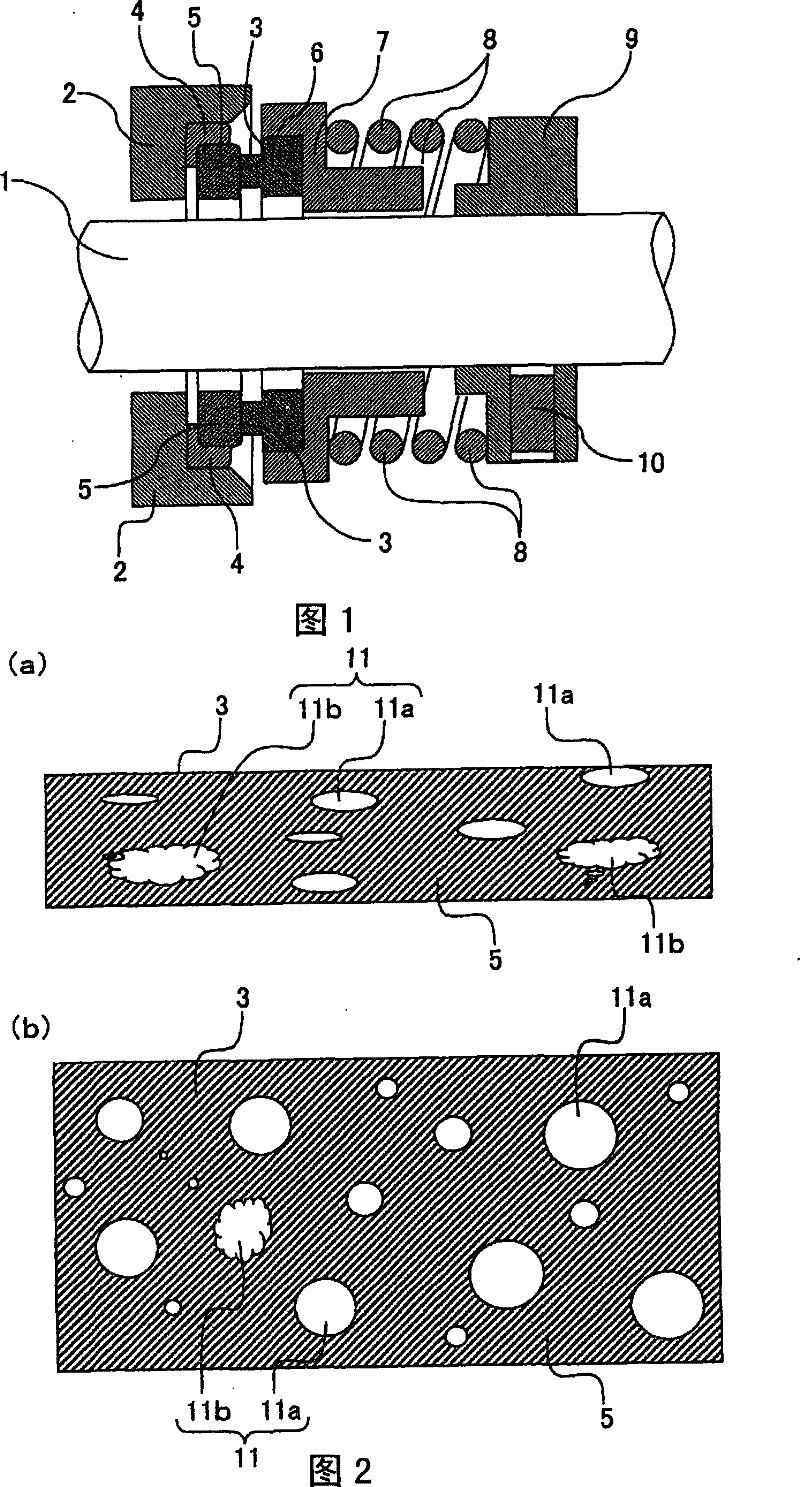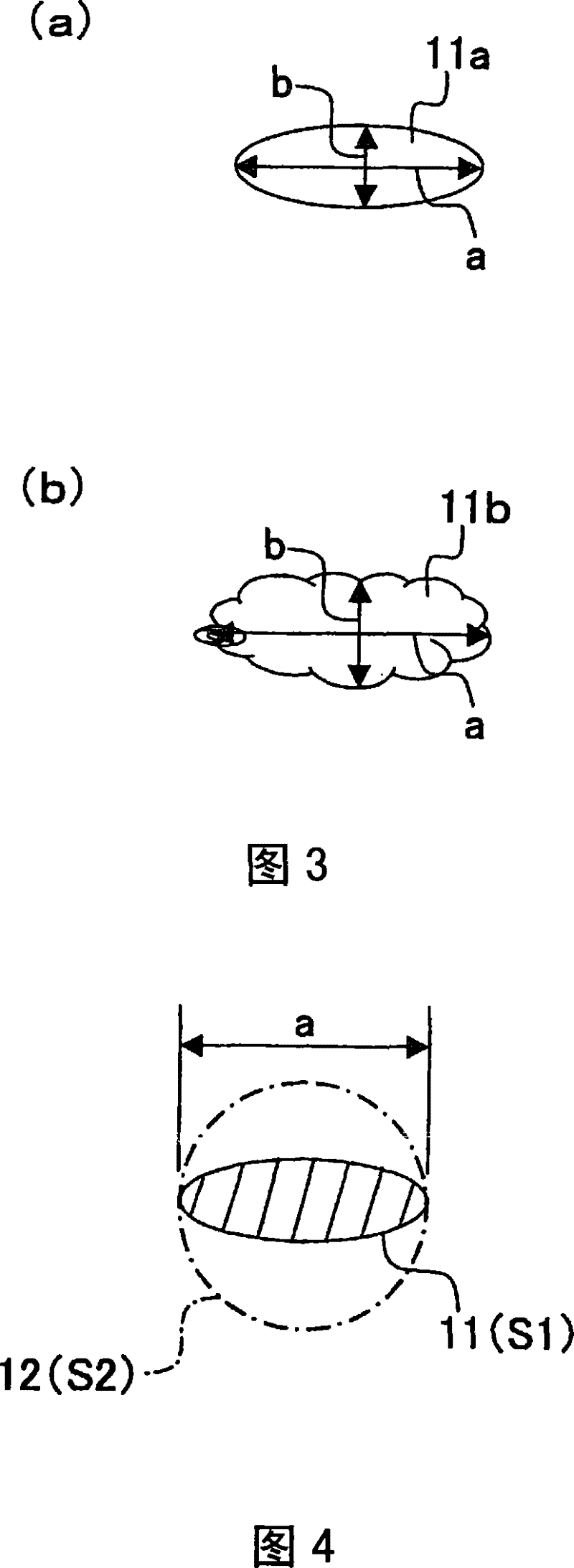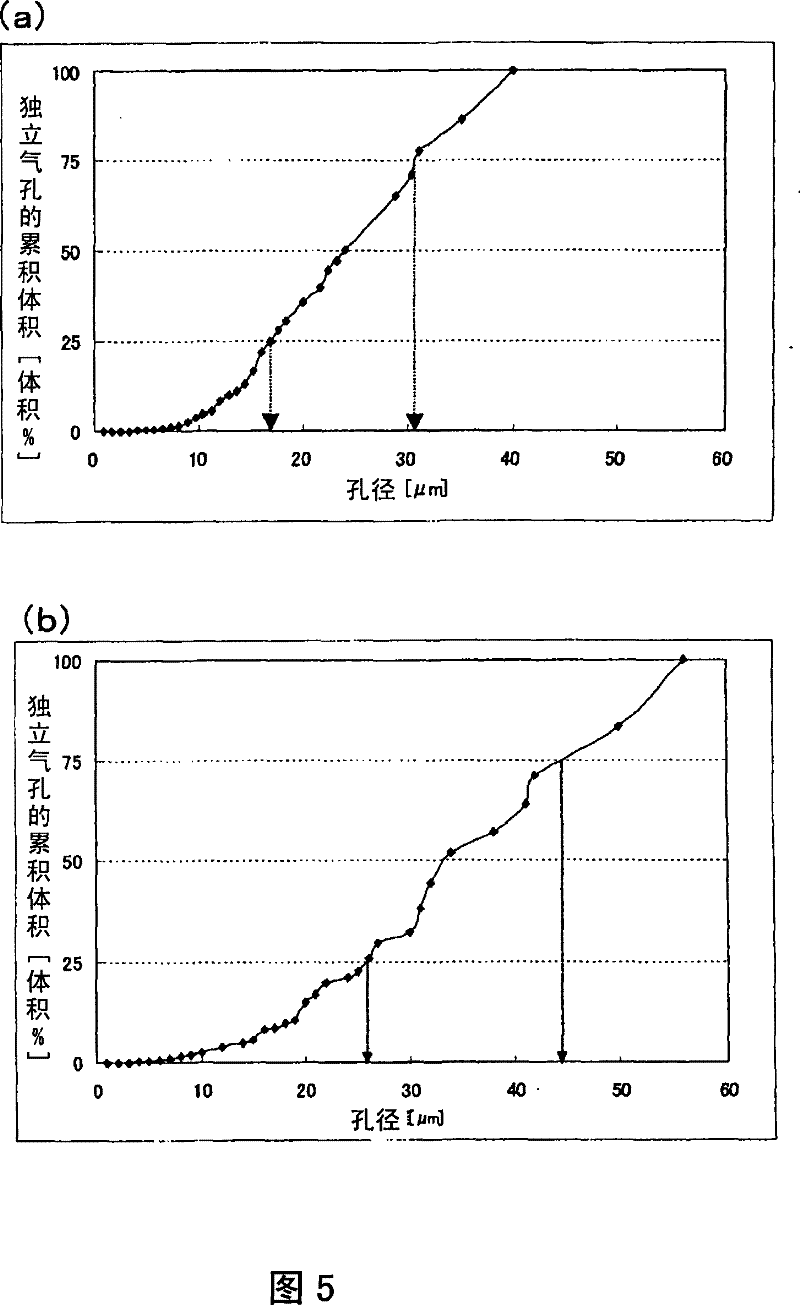Porous ceramic for use in slide member and its manufacturing method and mechanical seal ring using it
A sliding member and manufacturing method technology, applied in the direction of engine seals, ceramic products, mechanical equipment, etc., can solve the problems of increased sliding area, increased sliding torque, and insufficient guarantee of lubricity, and achieves significant wear loss, restraint The effect of wear and high strength
- Summary
- Abstract
- Description
- Claims
- Application Information
AI Technical Summary
Problems solved by technology
Method used
Image
Examples
Embodiment 1
[0117] Add a specified amount of alumina powder, yttrium oxide powder, dispersant and water to the silicon carbide powder, put it into a ball mill, mix for 48 hours, and form a slurry. After adding and mixing a molding aid to this slurry, it spray-dried and obtained the granulated powder with an average particle diameter of 18 micrometers.
[0118] Next, to this granulated powder, 8% by weight of the resin particles shown in Table 1 was added and mixed to obtain a mixed raw material, and the mixed raw material was molded into a predetermined shape under a pressure of 98 MPa to obtain samples No. 1 to 11. . Thereafter, sample Nos. 1 to 11 were held at 600° C. for 5 hours in a nitrogen atmosphere to degrease, and then held at 1850° C. for 3 hours in an argon atmosphere to perform sintering. Here, for samples No. 1 to 11, there are 3 discs each with at least either one of the upper and lower sides used as the sliding surface for the independent air hole evaluation, and 10 each o...
Embodiment 2
[0130] Add a specified amount of sintering aid, dispersant and water to the silicon carbide powder and put it into a ball mill, mix for 48 hours to form a slurry. At this time, those shown in Table 2 were used as sintering aids. After adding and mixing a molding aid to this slurry, it spray-dried and obtained the granulated powder with an average particle diameter of 18 micrometers.
[0131] Next, to this granulated powder, suspension-polymerized non-crosslinkable polystyrene resin particles were added and mixed in the amount shown in Table 2 as a pore forming agent to obtain mixed raw materials, respectively. This mixed raw material was molded under a pressure of 98 MPa into a bending test piece having a shape conforming to JIS C 2141-1992.
[0132] The obtained compact was held at 600° C. for 5 hours in a nitrogen atmosphere for degreasing, and then sintered at 1850° C. for 3 hours in an argon atmosphere to obtain sample Nos. 12 to 14. In addition, about sample No.12~14, p...
Embodiment 3
[0138] Add a specified amount of alumina powder, yttrium oxide powder, dispersant and water to the silicon carbide powder, put it into a ball mill, mix for 48 hours, and form a slurry. After adding and mixing a molding aid to this slurry, it spray-dried and obtained the granulated powder with an average particle diameter of 18 micrometers.
[0139] Next, to this granulated powder, 8% by weight of suspension-polymerized non-crosslinked polystyrene resin particles having an average particle diameter and a maximum particle diameter as shown in Table 3 were added and mixed as a pore-forming agent to obtain a mixed raw material. This mixed raw material was molded into a ring shape under a pressure of 98 MPa to obtain a molded body. Then, the molded body was degreased and fired in a reducing atmosphere to obtain sample Nos. 15 to 17. About the obtained sample No. 15-17, the measurement of the pore diameter of an independent pore, and an abrasion test were performed.
[0140] Speci...
PUM
| Property | Measurement | Unit |
|---|---|---|
| pore size | aaaaa | aaaaa |
| pore size | aaaaa | aaaaa |
| pore size | aaaaa | aaaaa |
Abstract
Description
Claims
Application Information
 Login to View More
Login to View More - R&D
- Intellectual Property
- Life Sciences
- Materials
- Tech Scout
- Unparalleled Data Quality
- Higher Quality Content
- 60% Fewer Hallucinations
Browse by: Latest US Patents, China's latest patents, Technical Efficacy Thesaurus, Application Domain, Technology Topic, Popular Technical Reports.
© 2025 PatSnap. All rights reserved.Legal|Privacy policy|Modern Slavery Act Transparency Statement|Sitemap|About US| Contact US: help@patsnap.com



